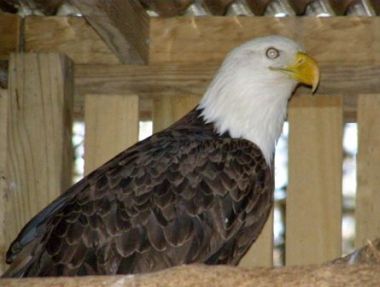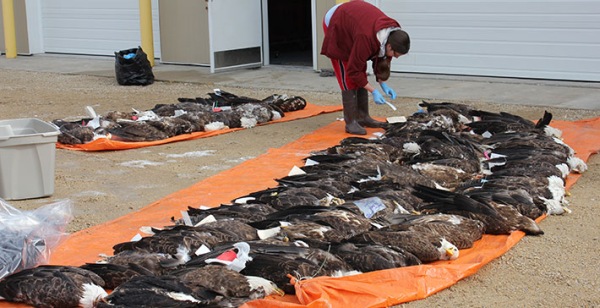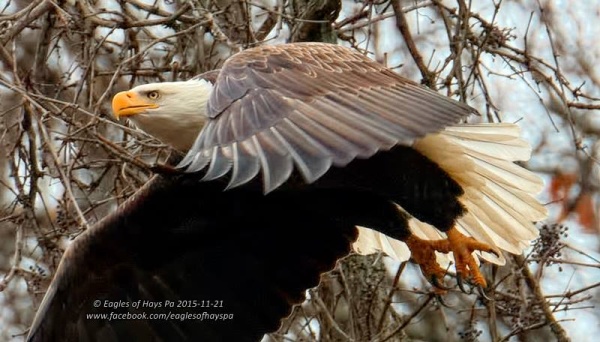
On Throw Back Thursday:
The news from Flint, Michigan about lead in their water supply reminds me that I wrote about lead poisoning in birds back in 2009. Sadly not much has changed.
Though the U.S. has banned lead shot in wetlands, it’s still present in fishing sinkers and the bullets used in deer hunting. Scavenging birds, including bald eagles, eat the gut piles hunters leave behind and are poisoned by the bullet fragments. Many die.
A 2012 bald eagle mortality study in the Upper Mississippi Valley found that 60% of the dead eagles had detectable concentrations of lead in their livers. 38% had lethal levels.

Sadly, the problem is seen too often by veterinarians and wildlife rehabilitators.
Back in January 2009 I wrote about the dangers of lead poisoning and the sick eagle, pictured above, who was treated at Medina Raptor Center, Ohio. Learn more in this 2009 blog post: Lead Poisoning
(photo from Wikimedia Commons. Click on the image to see the original)
p.s. Last year California became the first state to ban lead in bullets. They are phasing them out over a period of five years.





